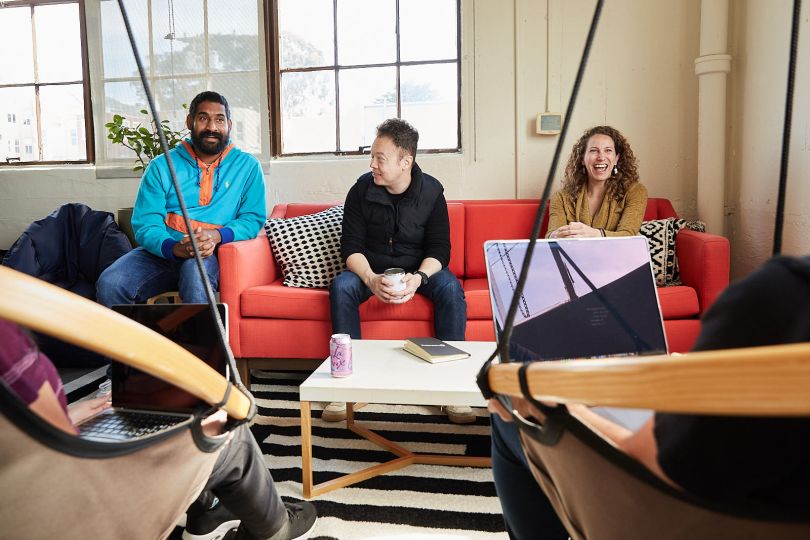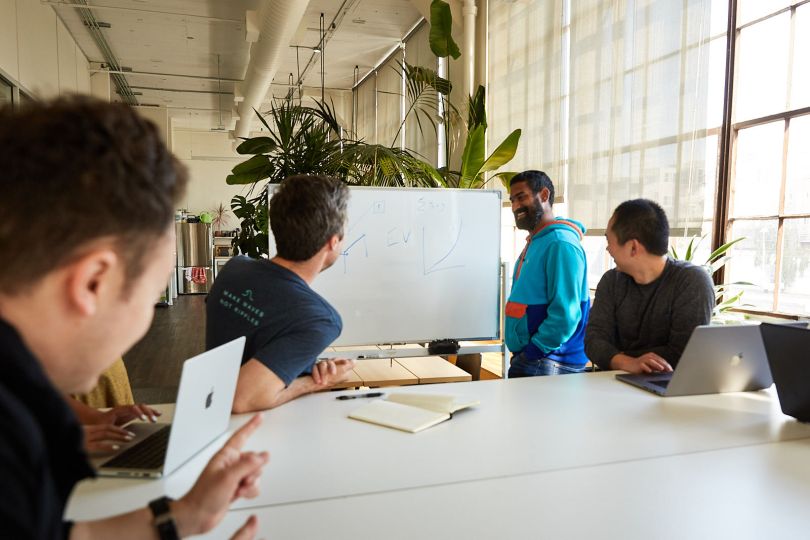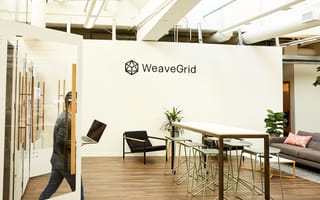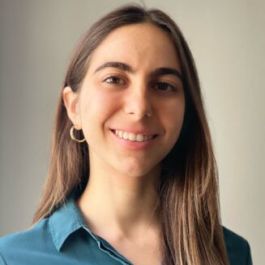In September 2022, California experienced one of its worst heat waves — an increasingly common refrain.
With record-breaking temperatures that engulfed the state in triple-digit highs, California’s energy grid leaned dangerously over the edge of unprecedented demand. On September 6, the state system operator observed a whopping 52,061 megawatts in energy consumption — 4 percent over the record. Though blackouts were ultimately avoided, it was nevertheless an alarm bell heard around the country.
For climate tech company WeaveGrid, whose software solution aims to improve grid management through electric vehicles (EV), the situation represented a validating call of duty.
“We’re tackling a generational, species-level problem,” said Khanh Nguyen, the company’s head of engineering. “The challenge is immense, but we are in a unique and fast-growing space of bringing the transportation and electricity industries together.”
WeaveGrid's EV Solution
As a tech industry veteran, Nguyen has seen the friction that comes from industry incumbents trying to tackle emerging challenges in the field. With 17 years at Google under his belt, he understood the challenges of introducing climate solutions into legacy products.
“It was a lonely exercise,” he remembered. “One out of 100 people you meet cares about climate, so you have to do a lot of preaching.” This was a stark contrast to his initial foray into WeaveGrid, where everywhere he turned there were people who have long been passionate about the environment. “I felt there was a large level of mission alignment here.”
Though they may lack the resources of conglomerates, a small, adaptable startup is often a house undivided. With more freedom to chart their own dynamic growth, employees at WeaveGrid can fully embrace climate ambitions that push for cutting-edge solutions.
“It’s not only software, but also trying to manage lots of moving pieces, millions of cars, and figuring out the best thing to do for the grid,” Nguyen explained. “It requires managing intelligence with a lot of data, which is something well-applied in different spaces, but not this one.”

Program Manager Luna Ascha also appreciates the company’s novel solution that is scalable across the energy industry, especially coming from three years at California’s Pacific Gas and Electric Company. Now her former employer is a valued stakeholder, one of many industry partners that WeaveGrid works with to solve the decarbonization problem.
“We don’t just want to be a vendor to our partners,” she explained. “It’s a complex ecosystem; it takes a lot of coordination and being nimble between multiple groups.”
The reward for such complicated, high-stakes work is exposure to talent from a variety of industries, and the validation that comes from maneuvering everyone onto the same page against one of the most pressing issues of the time. This was most clear to Ascha during her first in-office visit, which happened to coincide with the company acquiring a new client.
“It was a moment where I got to physically see all of these different organizations in the same space,” she recalled. “We’ve got an interdisciplinary company, it’s one of the reasons I wanted to work here.”
Though Robin Calhoun, product manager of driver programs, works with an entirely different set of stakeholders, she concurs with the cross-functional ethos and diverse backgrounds of both her colleagues and their collaborative partners. “They take into account all the different players,” she said. “And that’s required to be successful.”
EV drivers themselves are an important stakeholder in WeaveGrid’s core product, and Calhoun’s work demonstrates how for the first time, they have a say in the electric grid and how they consume energy. “Drivers have a seat at the table,” she said. “The short term problem is getting them to understand different options for charging and how that can benefit both them and the grid.”
The accelerating EV industry relies on influencing charging behavior among a swath of population who are used to life attached to gas pumps. To flip the mental model is to convince them that using software for day-to-day charging management ends up being cheaper and better for the environment, not to mention requiring less work or mental burden.
“We’re creating that shift, that sense of trust,” explained Calhoun. “I haven’t seen that before, where all of the incentives align in a software world.”
To see such an alignment between stakeholders, employees and users of all different backgrounds, Built In sat down with three members of the WeaveGrid team on how the common pursuit of a sustainable world powers them all.

What kind of challenges do you face and what’s unique about how you tackle those solutions?
Calhoun: A lot of folks are new to the behaviors of charging their car, so we’re helping them realize that they're gonna have more flexibility and opportunity to meet their needs with electric charging compared to internal combustion vehicles. It’s always interesting when we get feedback from drivers where they say they didn't realize how easy it was to set up a program, and how much money they’re saving. Safety is also a really foundational piece we're working on right now.
Transportation is critical to people; it's not something where you just send new updates to drivers and see what happens. We are really thoughtful with every decision we make. That also means checking in with folks across the company. It’s never just something within a team, we make sure that everyone who might have a perspective has a chance to give that feedback.
Ascha: I worked at a utility company prior to WeaveGrid, and there were big problems to think through, such as preparing the grid for EV growth. Part of my draw for working at WeaveGrid was that they were keen on solving this problem and understanding utilities’ issues to help them bridge this gap.
We work very closely with our utility partners throughout their entire journey, to ensure that our product is going to be a good fit for their needs. We want to help champion them and make sure they’re receiving recognition for these cutting-edge programs, as well as getting support from regulators for these programs to grow.
This is a new realm where utility companies are looking for new types of relationships with their customers to see those positive grid outcomes. Our utility clients are thrilled to be able to get insight on what their customers like to learn more about. We send out weekly communications to drivers so they understand their charging behaviors and insights; there is high engagement on those.
“This is a new realm where utility companies are looking for new types of relationships with their customers to see those positive grid outcomes.”
Nguyen: A lot of the hard work we do is to come up with an optimized charging schedule, based on signals from utilities and what drivers want. Solving this problem at scale and quickly, while satisfying the constraint and preference from our users, is an interesting one. It’s there in the algorithm, but how do we communicate to our users so they feel like there’s an element of choice? I’ve seen this issue plenty of times in my career, but the unique part is the many-people-acting-as-one problem. There’s a coordination here that requires us to convince many people to align their preferences and behaviors. This is a new thing to me.
As an engineering lead, a lot of what I think about is growth and scaling. If all goes well, the growth rate — number of drivers, utilities, car makers — is going to explode. The scaling problem is first and foremost. But with all of those stakeholders, there are ways we can set up our product and system that lets us scale in spite of cross-cutting demands. There’s a lot of fun aspects to think about here.

What kind of feedback or validation do you get from your work that keeps the mission aligned?
Ascha: It was an honor to win the SEPA Utility Transformation Partner of the Year Award. In this industry, we’re all working on the same problems. So being able to go to conferences and speak on panels alongside our utility partners, it’s awesome to see in-person the feedback we usually hear from our partners. On their own volition, they describe how wonderful we are to work with and how we’ve been a consistent partner that shows up reliably. I think it’s been a really great validation of the hard work and partnership we’ve had working on these EV programs.
The SEPA Utility Transformation Awards
Calhoun: A major highlight is hearing people say that they had no idea how easy and affordable it was to run an electric vehicle. Looking at reports internally, we’ve helped people shift the way they charge from more grid-intensive times to times when fewer devices and people are drawing power.
It’s really exciting to see the impact of a lot of individual decisions add up to actual shifts in power usage. It helps me remember that individual choices matter and that our drivers matter. Every choice adds up to something.
Nguyen: Perhaps for the first time, the users, in aggregate, are a real player in this space. The value of the system depends on the drivers understanding the value to them and the grid. Before, my relationship with my utility company was nonexistent — I pay my bills and I’m done. But this is not how it’s going to be in the future. For example, with my Tesla, I pay a lot more attention than any other car I’ve had before. You feel more agency about making choices.
Six weeks in, I’m still blown away by the mission alignment, and I see it in the makeup of our teams. For example, the engineering team has an incredible number of senior members that have been in the tech industry for more than 20 years. They are here only because they are deeply committed to climate — they could be doing anything else.
I’ve been at many different companies that have the excitement for a market, a technology or a prospect of incredible growth. But I have never been to one where there’s also a deep caring about the purposes for which the company exists.









